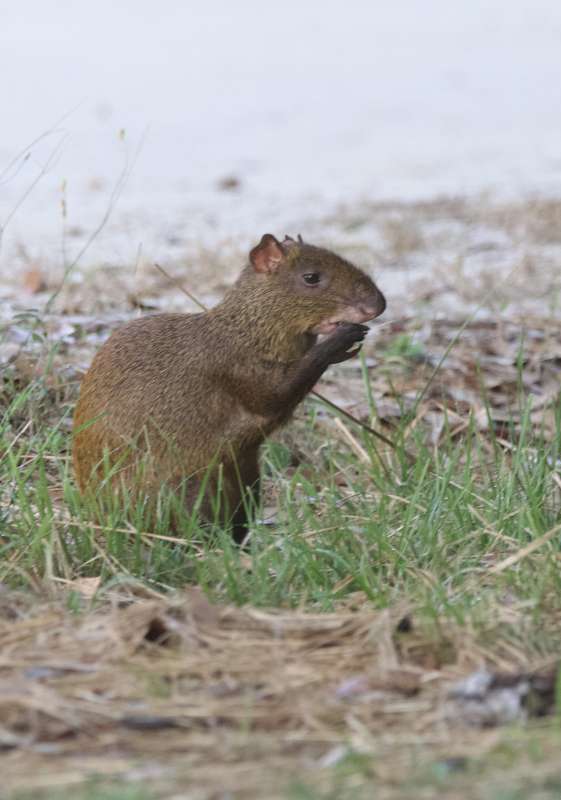Posted By: Gulo
Photo Phriday 68 - 11/18/22 03:56 PM
To really understand the predators, whether they are furbearers, big game, or raptors, one must understand their prey. Through the years, I've done a lot of work on marten, mink, and owls, thus, to understand their prey base, I've done thousands of trapnights for small mammals, along with lots of work on marmots, squirrels and rabbits. Even to this day, I still do lots of small mammal trapping to keep my finger on the pulse of food availability for coyotes, foxes, and marten. All those hundreds of samples go to a museum.
The northern red-backed vole is the "meat-and-potatoes" for marten and boreal owls in Alaska.
![[Linked Image]](https://trapperman.com/forum/attachments/usergals/2022/11/full-10376-157599-clru9_x.jpg)
Shrews (this one a vagrant shrew) are common in the diet, but don't add up in terms of percentage of the diet.
![[Linked Image]](https://trapperman.com/forum/attachments/usergals/2022/11/full-10376-157600-shrew_b_x.jpg)
One hoary marmot is several meals for the smaller predators.
![[Linked Image]](https://trapperman.com/forum/attachments/usergals/2022/11/full-10376-157601-marmot_1_x.jpg)
(Come on Sharon; Can't wait to see your selection of artwork.)
Jack
The northern red-backed vole is the "meat-and-potatoes" for marten and boreal owls in Alaska.
![[Linked Image]](https://trapperman.com/forum/attachments/usergals/2022/11/full-10376-157599-clru9_x.jpg)
Shrews (this one a vagrant shrew) are common in the diet, but don't add up in terms of percentage of the diet.
![[Linked Image]](https://trapperman.com/forum/attachments/usergals/2022/11/full-10376-157600-shrew_b_x.jpg)
One hoary marmot is several meals for the smaller predators.
![[Linked Image]](https://trapperman.com/forum/attachments/usergals/2022/11/full-10376-157601-marmot_1_x.jpg)
(Come on Sharon; Can't wait to see your selection of artwork.)
Jack
![[Linked Image]](https://trapperman.com/forum/attachments/usergals/2022/11/full-698-157608-img_0148.jpg)

![[Linked Image]](https://trapperman.com/forum/attachments/usergals/2022/11/full-20139-157609-packrat_home_decor.jpeg)
![[Linked Image]](https://trapperman.com/forum/attachments/usergals/2022/11/full-20139-157613-house_packrat.bmp.jpg)
![[Linked Image]](https://trapperman.com/forum/attachments/usergals/2022/11/full-20139-157611-woodchuck.jpg)
![[Linked Image]](https://trapperman.com/forum/attachments/usergals/2022/11/full-20139-157616-norway_rat_stealing.jpg)
![[Linked Image]](https://trapperman.com/forum/attachments/usergals/2022/11/full-20139-157620-deep_in_thought.bmp.jpg)
![[Linked Image]](https://trapperman.com/forum/attachments/usergals/2022/11/full-20139-157621-grasshopper_mouse_001.jpg)
![[Linked Image]](https://trapperman.com/forum/attachments/usergals/2022/11/full-20139-157634-deer_mouse_jpg.jpg)
![[Linked Image]](https://trapperman.com/forum/attachments/usergals/2022/11/full-698-157635-img_0149_2.jpg)

![[Linked Image]](https://trapperman.com/forum/attachments/usergals/2022/11/full-40766-157663-9655fb08_30b1_4ad5_8e4d_28842d7d6e10.jpeg)
![[Linked Image]](https://trapperman.com/forum/attachments/usergals/2022/11/full-40766-157668-img_4473.jpg)
![[Linked Image]](https://trapperman.com/forum/attachments/usergals/2022/11/full-46733-157695-full_20139_157611_woodchuck.jpg)